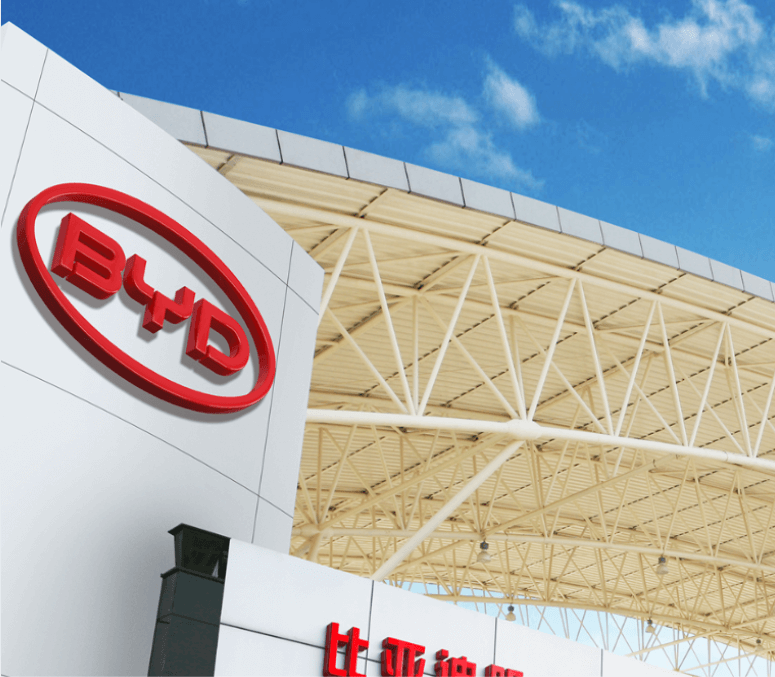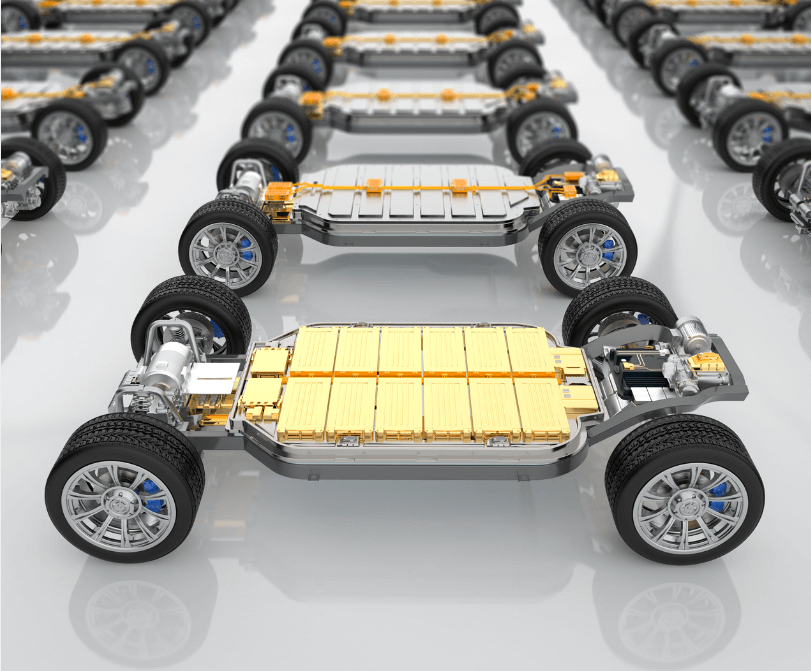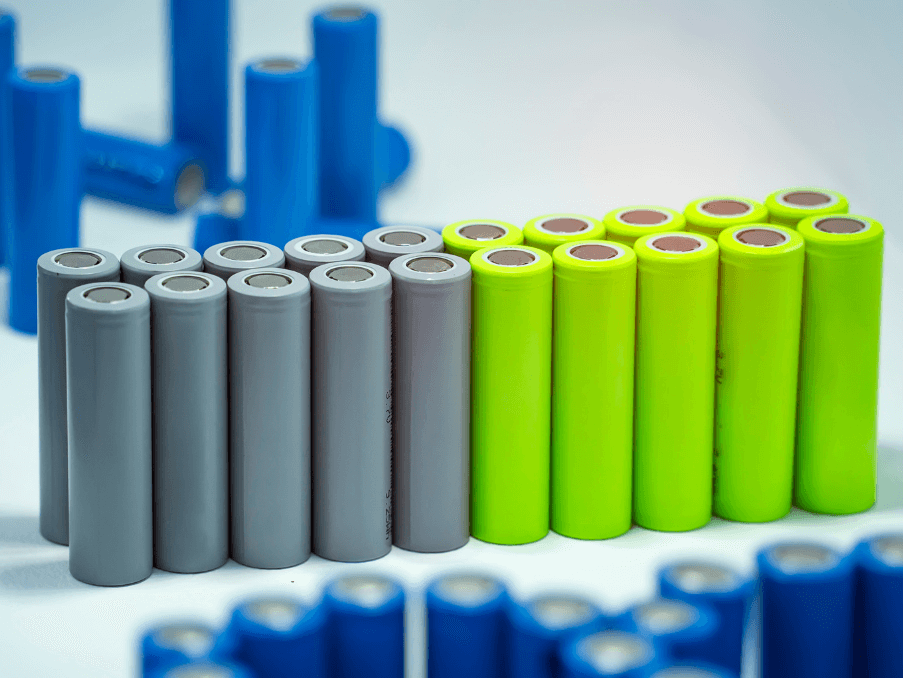
As we know, Tesla has long been at the forefront of technology for batteries in electric vehicles (EVs) and offers a variety of battery chemistries that optimize performance, endurance and cost-effectiveness. But two particularly notable batteries that Tesla includes in its cars are lithium-ion and lithium ironphosphate (LFP) batteries.
While both technologies have significant advantages, each has its own strengths and drawbacks. In this article, we will tell you the main differences between Tesla’s LFP and lithium-ion batteries, their benefits, cost factors and which one is best for different use cases.

Do you know what lithium-ion Battery is?
Lithium-ion batteries (Li-ion) have been the industry standard for most consumer electronics, including smartphones, laptops, and electric vehicles, for decades. These batteries use a combination of lithium, cobalt, nickel and manganese in their chemical composition. Common cathode materials for lithium-ion batteries include NCA (nickel-cobalt-aluminum) and NCM (nickel-cobalt-manganese).
Li-ion batteries are valued for their high energy density, which makes them ideal for applications where space and weight are limited, such as electric vehicles. The ability to store significant amounts of energy relative to their size ensures that EVs equipped with lithium-ion batteries can achieve impressive driving ranges.
What is the LFP battery?
Lithium iron phosphate (LFP) batteries are a subset of lithium-ion batteries but use iron phosphate as the cathode material, making them different from traditional lithium-ion batteries such as NCA and NCM. LFP batteries are known for their stability, longevity and safety.
They have a lower energy density than other lithium-ion batteries, but their cost-effectiveness, durability and safety profile have made them a popular choice for certain EV models, especially Tesla’s more affordable options like the Model 3 and Model Y.
Now know some advantages of lithium-ion batteries
Higher energy density
The main advantage of lithium-ion batteries is their high energy density, which allows vehicles equipped with them to travel long distances on a single charge. For Tesla vehicles, this means lithium-ion batteries provide extended range and reduce the need for frequent charging, especially important for long-distance trips.
For example, Tesla’s Long Range and Performance models are equipped with lithium-ion batteries, offering up to 375 miles of range, making them more suitable for users who prioritize long-range driving and convenience.
Lightweight and compact
Another advantage of lithium-ion batteries is their relatively lightweight and compact design compared to LFP batteries. This feature is crucial for electric vehicles, where weight reduction directly contributes to efficiency and performance. Li-ion batteries allow automakers to design sleek, high-performance vehicles without compromising space or range.
Fast charging capability
Lithium-ion batteries typically support faster charging rates than LFP batteries, allowing EV drivers to quickly recharge their vehicles at Tesla Supercharger stations. This is an important feature for those who frequently use their EVs for long-distance trips, as shorter charging times can improve the overall user experience.
Extensively proven technology
Lithium-ion batteries have been around for decades and are widely tested and proven in various industries. Tesla has experience in optimizing and developing such batteries, making them a highly reliable and trusted option for its premium and long-range vehicles.
LFP batteries have some special advantages
Greater Durability and Longevity
LFP batteries are known for their exceptional longevity. While lithium-ion batteries typically last 1,000 to 1,500 cycles (a charge and discharge cycle), LFP batteries can withstand more than 2,500 cycles. This makes them ideal for applications that demand high cycle life, such as daily driving in stop-and-go traffic or ride-sharing services.
The extended cycle life means that Tesla vehicles equipped with LFP batteries will experience less degradation over time, retaining a higher percentage of their original range after years of use.
Enhanced Security Profile
The most significant advantage of LFP batteries is their improved safety. LFP batteries are much less prone to overheating, which makes them more stable and reduces the risk of thermal runaway a condition where a battery overheats and catches fire. This superior thermal stability makes LFP batteries an attractive choice for drivers who prioritize safety, especially in extreme climates or during high-stress operations.
Low cost
LFP batteries are generally cheaper than lithium-ion batteries that use nickel and cobalt. These raw materials, particularly cobalt, are expensive and have limited supply chains, making lithium-ion batteries expensive to manufacture. In contrast, LFP batteries rely on more abundant and affordable materials such as iron and phosphate, significantly reducing costs.
This cost advantage allows Tesla to offer vehicles equipped with LFP batteries like the standard range Model 3 and Model Y at a more affordable price point. As Tesla expands globally, especially in price-sensitive markets like China, LFP batteries help keep electric vehicles competitive with traditional gasoline vehicles.
High charging efficiency
Although LFP batteries typically do not charge as fast to ultra-high levels as lithium-ion, they are still very efficient at charging and discharging. LFP batteries can be regularly charged up to 100% without concern about long-term degradation, which Tesla expressly recommends with its vehicles equipped with LFP batteries. This is in stark contrast to lithium-ion batteries, which are generally recommended to be charged up to 80% for daily use to preserve battery health.
Environment friendly
LFP batteries are more environmentally friendly than traditional lithium-ion batteries, mainly due to the absence of cobalt, an element often associated with environmental and ethical concerns. Cobalt mining is known for its negative environmental impact and harsh working conditions. Using iron and phosphate, LFP batteries offer a more sustainable option for EV production.
Comparison of Tesla LFP and Lithium-Ion Batteries
Energy density and range
Lithium-ion batteries have a clear advantage in terms of energy density. This means that Tesla cars equipped with lithium-ion batteries typically have a longer driving range than LFP batteries. For example, a Model 3 Long Range (with lithium-ion) can drive about 358 miles on a full charge, while a standard range Model 3 (with LFP) has a range of about 272 miles.
While LFP batteries fall short in terms of range, they offer enough range for daily driving and short to medium commutes, making them a great choice for city dwellers or those with access to frequent charging stations.
Costs
LFP batteries are considerably more cost-effective than lithium-ion batteries. This cost difference is passed on to consumers, allowing Tesla to offer lower-priced models without compromising overall vehicle quality. As such, vehicles like the Model 3 and Model Y with LFP batteries provide an entry point into Tesla ownership for budget-conscious buyers.
By comparison, Tesla’s standard range Model 3 equipped with LFP batteries starts at a lower price than the Long Range and Performance models, making EVs more accessible.
Longevity and Deterioration
LFP batteries are superior to lithium-ion batteries when it comes to cycle life and long-term degradation. They can withstand a large number of charge and discharge cycles before showing significant signs of wear. This means that LFP-powered Teslas can maintain their range and performance for a long time, making it a long-term investment for drivers who plan to keep their vehicles for many years.
On the other hand, lithium-ion batteries tend to degrade quickly, especially if regularly charged to 100%. Although Tesla’s battery management system helps reduce this degradation, LFP batteries still perform much longer in terms of longevity.
Charging Efficiency
LFP batteries excel in charging efficiency, especially for daily users who need to charge their vehicles frequently. Tesla recommends charging LFP-equipped vehicles regularly to 100%, a practice that helps maintain vehicle range without negatively impacting battery health. On the other hand, Tesla advises lithium-ion battery users to charge only 80-90% for daily use, reserving a full 100% charge for long-distance travel.
This difference may have implications for real-world convenience, as LFP battery users do not need to worry as much about best charging practices.
Security
LFP batteries are considered safer than lithium-ion batteries because of their improved thermal stability and lower risk of overheating. For drivers in hot climates or those concerned about battery safety, the LFP offers a reassuring alternative. Tesla’s lithium-ion batteries have improved safety features, but they are still more prone to thermal runaway in extreme conditions than LFP technology.
Environmental Effects
LFP batteries have a lower environmental impact than traditional lithium-ion batteries because they do not contain cobalt. Cobalt mining has been linked to human rights abuses and environmental damage. By choosing LFP batteries, Tesla is contributing to more sustainable EV manufacturing practices.
Price differences
The price difference between Tesla vehicles equipped with lithium-ion batteries and LFP batteries reflects the cost of materials used and manufacturing complexity. Tesla’s Standard Range Model 3, equipped with an LFP battery, is more affordable than the Long Range and Performance models, which use lithium-ion batteries.
For budget buyers, this price gap makes LFP-powered vehicles a more accessible choice, especially when considering the long-term cost savings associated with LFP’s durability and slower degradation.

Which battery might be best for you?
Best for long-distance travel: Lithium-ion batteries
If you regularly drive long distances or take frequent road trips, a Tesla with a lithium ion battery would be the best option. The high energy density and long range of lithium-ion batteries make them perfect for those who want the convenience of fewer stop charges.
Best for city driving and affordability: LFP battery
For those who primarily drive around town or don’t mind frequent charging, Tesla’s LFP battery offers a budget-friendly option with solid performance. Durability and low degradation rate make it an ideal choice for urban environments, daily commutes and users who prioritize long-term reliability.
Best for safety and longevity: LFP batteries
If safety and battery longevity are your main concerns, LFP batteries offer the best choice. They are safe in extreme conditions and have long life cycles, making them a great investment for those who plan to keep their vehicles for a decade or more.
Conclusion
Both lithium-ion and LFP batteries offer unique advantages to Tesla’s electric vehicles. Lithium-ion batteries excel in energy density, range and fast charging, making them ideal for long-distance drivers. On the other hand, LFP batterie offer exceptional durability, safety, and cost-effectiveness, making them the best option for budget-conscious consumers, city drivers, or those who prioritize longevity.

























